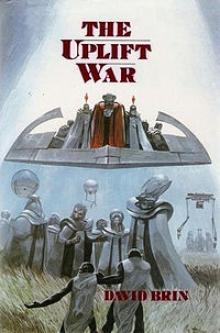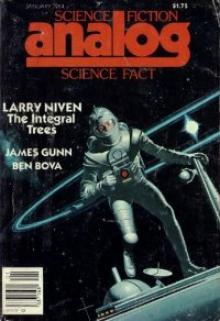- Home
- David Brin
The Heart of the Comet
The Heart of the Comet Read online
The Heart of the Comet
David Brin
Gregory Benford
An odyssey of discovery, from a shattered society through the solar system with a handful of men and women who ride a cold, hurtling ball of ice to the shaky promise of a distant, unknowable future.
The novel tells the story of an expedition beginning in the year 2061 to capture Comet Halley into a short period orbit so that its resources can be mined. The discovery of life on the comet and the subsequent survival struggle against the indigenous lifeforms and the illnesses and infections they cause leads to a breakdown of the expedition crew and the creation of factions based around political beliefs, nationality and genetic differences between the “percells”—genetically enhanced humans and the “orthos”—unmodified humans. As well as the fighting between these factions, Earth rejects the mission due to fear of contamination from the halleyform life and attempts to destroy the comet and those living upon it. Eventually the mission crew on Halley are forced to accept that they can never return to earth and create a new biosphere within the comet's core and in some cases evolve into symbiotic organisms with the halleyform life.
Heart of the Comet
by David Brin and Gregory Benford
To
Poul and Robert
Greg and Carolyn
Larry and Jerry
Charles and Harry and John
and all the rest who do it the hard way.
ACKNOWLEDGMENTS
This novel was written on the basis of the best information available at the time concerning comets in general, and Halley’s Comet in particular. It was created in the awareness (and hope) that the successful 1986 Halley probes and International Halley Watch would vastly multiply our knowledge of these fascinating leftovers of creation. If some of this new information turns out to invalidate a few premises of our story, we hope at least that the reader will credit us with daring. We felt we had to tell this story now, to honor an interplanetary envoy whose visits are so well timed to once in a human span.
The authors would like to thank those experts who were of assistance, including Professors Mike Gaffey, John Lewis, John Cramer, Bert King, and Karl Johannson, as well as Dr. Ray Newburn of JPL and Dr. Eric Jones of Los Alamos Labs. Dr. Donald Yeomans of JPL and Dr. Neal Hulkower of TRW Inc. helped with orbital mechanics.
We would also like to thank Anita Everson, Joan Abbe, Richard Curtis, Sue Roberts, Dan Spadoni, Nancy Grace, William Lomax, Bonnie Graham, April Abrams and Diane Brizolara. Karen and Poul Anderson and Astrid and Greg Bear, were most gracious, also.
Dr. Louis D’Amario and Dr. Dennis Brynes of the Jet Propulsion Laboratory helped drive the plot with their wonderful calculations of planetary encounters. Each of them gets a dinner and a bottle.
And, as always, Lou Aronica of Bantam Books was understanding of the needs of authors laboring under “astronomical” deadlines.
We will be many things, in the future. But there will never cease to be a need for courage.
—David Brin and Gregory Benford
September 1985
PART 1
BANNERS OF THE ANGELS
October 2061
He that leaveth nothing to chance
will do few things ill,
but he will do very few things.
—Halifax
Positions of Inner Planets and Comet Halley
October 2061
(from Ecliptic North)
(from Vernal East)
CARL
Kato died first.
He had been tending the construction mechs—robots that were deploying girders on the thick black dust that overlay the comet ice.
From Carl’s viewpoint, on a rise a kilometer away, Kato’s suit was a blob of orange amid the hulking gray worker drones. There was no sound, in spite of the clouds of dust and gas that puffed outward near man and machines. Only a little static interfered with a Vivaldi that helped Carl concentrate on his work.
Carl happened to be looking up, just before it happened. Not far from Kato, anchored near the north pole of the comet’s solid core, eight spindly spires came together to form a pyramidal tower. At its peak nestled the microwave borer antenna, an upside-down cup. Kato worked a hundred meters away, oblivious to the furious power lancing into the ice nearby.
Carl had often thought the borer looked like a grotesque, squatting spider. From the hole beneath it came regular gushes of superheated steam.
As if patiently digging after prey, the spider spat invisible microwaves down the shaft in five-second bursts. Moments after each blast, an answering yellow-blue jet of heated gas shot up from the hole below, rushing out of the newly carved tunnel. The bellowing steam jet struck deflector plates and parted into six plumes, fanning outward, safely missing the microwave pod.
The borer had been doing that for days, patiently hammering tunnels into the comet core, using bolts of centimeter-wavelength electromagnetic waves, tuned to a frequency that would strip apart carbon dioxide molecules.
Carl felt a faint tremor in his feet each time a bolt blazed forth. The horizon of ancient dark ice curved away in all directions. Out-croppings of pure clathrate snow here and there jutted out through thick layers of spongy dust. It was a scene of faded white against mottled browns and deep, light-absorbing black.
Kato and his mechs worked near the microwave borer, drifting on tethers just above the surface. The core’s feeble gravity was not enough to hold them down when they moved. Overhead, thin streamers of ionized, fluorescing gas swayed against hard black night, seeming to caress the Japanese spacer.
Kato supervised as his steel-and-ceramic robot mechanicals did the dangerous work. He had his back to the spider.
Carl was about to turn back to his own task. The borer chugged away methodically, turning ice to steam. Then one of the giant spider legs popped free in a silent puff of snow.
Carl blinked. The microwave generator kept blasting away as the leg flew loose of its anchor, angling up, tilting the body. He did not have time to be horrified.
The beam swept across Kato for only a second. That was enough. Carl saw Kato make a jerky turn as if to flee. Later, he realized that the movement must have been a final, agonized seizure.
The beam blasted the ice below the man, sending luminous sheets of orange and yellow gas pouring into the darkness above, driving billows of dust. Vivaldi vanished under a roar of static.
The invisible beam traced a lashing, searing path. It jittered, waved, then tilted further. Away from the horizon. Toward Carl.
He fumbled for his control console, popped the safety cover, and repeatedly stabbed the countermand switch. His ears popped as the static storm cut off. Every mech and high-power device on this side of Halley Core shut down. The microwave finger ceased to write on the ice only a few score meters short of Carl.
The spider began to collapse. Halley’s ten-thousandth of a G was too weak to hold down a firing microwave generator, but without the upward kick of expanding gas and radiation pressure, the iceworld’s own weak attraction asserted itself. The frame lurched and began its achingly slow fall.
—What the hell you doin’? My power’s out.—
That would be Jeffers. Other voices babbled over the commline.
“Mayday! Kato’s hurt.” Carl shot across dirty-gray ice. His impulse jets fired with a quick, deft certainty as he flew, unconsciously moving with the least wasted energy, the result of years of training. Crossing the rumpled face of Halley was like sailing adroitly over a frozen, dusty sea beneath a black sky.
Against all hope, he tried calling to the figure in the orange spacesuit, splayed, face downward, on the gouged snowfield. “Kato…?”
When he approached, Carl found something that did not resemble a man nearly so much as a blackened, distorted, badly roasted chicken.
Umolanda was next.
The timetable didn’t leave much room to mourn Kato. A med team came down from the flagship, the Edmund Halley, to retrieve Kato’s body, but then it was back to work.
Carl had learned years before to work through unsettling news, accidents, foul-ups. Shrugging off a crewmate’s death wasn’t easy. He had liked Kato’s energy, his quick humor and brassy confidence. Carl promised his friend’s memory at least one good, thoroughly drunken memorial party.
He and Jeffers fixed the spider, reanchoring the foot and reflexing the leg. Carl cut away the damaged portion. Jeffers held the oxygen feed while he slapped a spindly girder segment into the opening. At Carl’s signal, the other spacer played the gas jet over the seams and the metal leaped to life, self-welding in a brilliant orange arc. They had the repair done before Kato’s body was back on the Edmund.
Umolanda came over the rim of Halley Core, pale blue jets driving her along the pole-to-pole cable. The easiest way to move around the irregular iceball was to clip onto the cable and fire suit jets, skimming a few meters above the surface. Magnetic anchors released automatically as you shot by, to minimize friction.
Umolanda was in charge of interior work, shaping irregular gouges into orderly tunnels and rooms. She met Carl near the entrance to Shaft 3, a kilometer from the accident site. The piledriving spider labored away again on the horizon.
—Pretty bad about Kato,— she sent.
“Yeah.” Carl grimaced at the grisly memory. “Nice guy, even if he did play those old junk movies on the 3D all the time.”
—At least it was quick.—
He didn’t have anything to say to that, didn’t like talking a whole lot out here anyway. It just interfered with the job.
Umolanda’s liquid eyes studied him through a bubble helmet spattered with grime. The neck ring hid her cleft chin. He was surprised to see that this omission revealed her as an otherwise striking woman, her ebony skin stretched by high cheekbones into an artful, ironic cast. Funny, how he’d never noticed that.
—Did you investigate the cause?—
“I checked the area where the spider leg got loose,” Carl answered. “Looked like a fault under it gave way.”
She nodded. —Not surprising. I’ve been finding hollows below, formed when radioactive decay warmed the ice long ago, as Halley formed. If some hot gas from the spider’s digging worked its way back to the surface through one of those hollows, it could undermine the spider’s anchor.— Carl squinted at the horizon, imagining the whole cometary head riddled with snaking tunnels. “Sounds about right.”
—Shouldn’t the spider have cut off as soon as it lost focus?—
“Right.”
—The switch?—
“Damn safety cutoff was defective. Just didn’t kick in,” Carl said sourly.
Her eyebrows knitted angrily. —More defective equipment!—
“Yeah. Some bastard Earthside made a little extra on the overhead.”
—You’ve reported it?—
“Sure. It’s a long walk back for replacement parts though.” He smiled sardonically. There was a brief silence before Umolanda spoke again.
—There will always be accidents. We lost people at Encke, too.—
“That doesn’t t make it any easier.”
—No… I guess not.—
“Anyway, Encke was a pussycat of a comet. Old. Sucked dry. Lots of nice safe rock.” He scuffed the surface softly with a boot tip. Snow and black dust puffed at the slightest touch.
She forced a grin. —Maybe all this ice is supposed to keep us alive over the long haul, but it’s killing us in the short run.—
Carl gestured toward three mechs which stood nearby, waiting for orders. Already the machines were pitted and grimy from Halley’s primordial slush. “That’s your team. Kato was shaping them up. But you might want to give ’em a once-over, anyway.”
—They look okay.— Umolanda whistled up the color-coded readout on the back of the nearest one and nodded. —Some luck here. The microwave beam didn’t hit them. I’ll take them down, put them to hollowing out Shaft Three.—
She tethered the boxy, multiarmed robots and gracefully towed them to the tunnel entrance. Carl watched her get them safely aligned and disappear down the shaft, leading the mechs like a shepherd, though in fact the mechs were as smart as a ten-year-old at some things, and a lot more coordinated.
He went on to check out more of the equipment that other crewmen were ferrying down from the Edmund. It was dull labor, but he had been working in the shafts for days and needed a break from the endless walls of rubble-seamed ice.
Overhead, gauzy streamers wove a slow, stately dance. Halley’s twin shimmering tails were like blue-green silks. They were fading now, months past the brief summer crisping that came for the comet every seventy-six years. But still the banners of dust and ions unfurled, gossamer traceries waving as if before a lazy breeze, the flags of vast angels.
The expedition had elected to rendezvous with Halley’s comet after its 2061 perihelion passage, when the streaking planetoid was well on its way outward again. Here, beyond the orbit of Mars, the sun’s violent heating no longer boiled off the huge jets of water molecules, dust, and carbon dioxide that made Halley so spectacular during its short summer.
But heat lingers. For months, as Halley swooped by the fierce, eroding sun, temperature waves had been diffusing down through the ice, and rock, concentrating in volatile vaults and scattered clumps of rock. Now, even as the comet lofted back into the cool darkness of the outer solar system, there were still reservoirs of warmth inside.
The gritty, dark potato shape was a frozen milkshake of water, carbon dioxide, hydrocarbons, and hydrogen cyanide, each snow subliming into vapor at a different temperature. Inevitably, in some spots, the seeping warmth melted or vaporized ices. These pockets lay waiting.
Carl was partway through assembling a chemical filter system when he heard a sharp high cry on suit-comm.
Then sudden, ominous silence.
His wrist display winked yellow-blue, yellow-blue: Umolanda’s code.
Damn. Twice in one shift?
“Umolanda!”
No answer. He caught the polar cable and went hand over hand toward the mouth of Shaft 3.
Mechs milled at a cave-in, digging at the slowly settling ice amid swirls of sparkling fog. No signal from Umolanda. He let the mechs work but popped pellet memories out of their backpacks to scan while he waited. It was soon apparent what had happened.
Deep in the ice, the mechs had dutifully chipped away at the walls of the first vault. Umolanda controlled them with a remote, staying in the main tunnel for safety. The TV relay told her when to sequence the robots over to a new routine, when to touch up details, when to bore and blast. She hung feathered, and monitored the portable readout board, occasionally switching over to full servoed control of a mech, to do a particularly adroit bit of polishing.
She had been working at the far end of what would soon be a storage bay when a mech struck a full-fledged boulder of dark native iron two meters across. Captain Cruz had asked them to watch out for usable resources. Umolanda put all three mechs to retrieving it. Under her guidance they slipped levers around the boulder and tried to pry it free. The sullen black chunk refused to budge.
Umolanda had to come in close to inspect. Carl could envision the trouble; mechs were good, but often it was hard to see whether they were getting the best angle.
Carl had a dark premonition. The boulder had been absorbing heat for weeks, letting it spread into a slush that lay intermediately behind it, a pocket of confined carbon dioxide and methane. This frothy soup would be perched at its critical point, needing only a bit more temperature or a fraction less pressure if, burst forth into the vapor phase.
Oh for chrissakes, Umolanda don’t …
A mech slipped its leve
ring rod around the boulder, penetrating into the reservoir of slush. Umolanda saw the robot lurch, recover. She told it to try again, and moved a little closer to observe.
The mech was slow, gingerly. Its aluminum jacket was spattered and discolored from several days in the ice, but its readouts showed it was in perfect running order. Using as its pivot its own tether in the wall, it levered around the boulder, lunged—and the iron gobbet popped free.
No!
Release of pressure liberated the vaporization energy. The explosion drove the pry bar out of the mech’s grip like a ramrod fired through the barrel of a cannon.
Umolanda was two meters away. The lever buried itself in her belly.
The pellet-memory readout terminated. Carl blinked away tears.
He waited while the mechs cleared the way. There was really no need to hurry.
* * *
Mission Commander Miguel Cruz called off operations for two full shifts. The setup crew had been working to the hilt for a week. Two deaths in one day implied that they were making errors from plain fatigue.
Umolanda’s accident had spewed forth a pearly fog for an hour as the inner lake of slush boiled out. Had anyone Earthside been watching through a strong telescope, they could have detected aslight brightening at the cometary head. It was a fleeting memorial. The blinding storm had driven her mechs out into the shaft, dislodged enough ice to bury her. Carl and the others were kept outside until it was too late to recover her and freeze her down slowly for possible medical work. Umolanda was lost.
Carl came up on the last ferry. The mottled surface seemed to darken with distance: the cometary nucleus dwindled to a blackish dot swimming in a luminous orange-yellow cloud. Though the fuzzy haze of the coma was still visible with a small telescope from Earth, from near the head itself the shimmering curtains of ions were lacy, scarcely noticeable. Gas and grains of dust still steadily popped free of Halley’s surface, making cargo piloting tricky. Most of the outgassing now came not from the sun’s ebbing sting, but from the waste heat of humans.

 The Practice Effect
The Practice Effect Infinity's Shore
Infinity's Shore Insistence of Vision
Insistence of Vision Sundiver
Sundiver Brightness Reef
Brightness Reef Existence
Existence The Transparent Society
The Transparent Society Startide Rising
Startide Rising The Postman
The Postman The Uplift War
The Uplift War The Loom of Thessaly
The Loom of Thessaly Otherness
Otherness Sundiver u-1
Sundiver u-1 The Uplift War u-3
The Uplift War u-3 Infinity's Shore u-5
Infinity's Shore u-5 Brightness Reef u-4
Brightness Reef u-4 Uplift 2 - Startide Rising
Uplift 2 - Startide Rising Kiln People
Kiln People Heaven's Reach u-6
Heaven's Reach u-6 The Transparent Society: Will Technology Force Us to Choose Between Privacy and Freedom?
The Transparent Society: Will Technology Force Us to Choose Between Privacy and Freedom? Star Wars on Trial
Star Wars on Trial Lungfish
Lungfish Tank Farm Dynamo
Tank Farm Dynamo Just a Hint
Just a Hint A Stage of Memory
A Stage of Memory Foundation’s Triumph sf-3
Foundation’s Triumph sf-3 Thor Meets Captain America
Thor Meets Captain America Senses Three and Six
Senses Three and Six The River of Time
The River of Time Chasing Shadows: Visions of Our Coming Transparent World
Chasing Shadows: Visions of Our Coming Transparent World Foundation's Triumph
Foundation's Triumph Startide Rising u-2
Startide Rising u-2 The Fourth Vocation of George Gustaf
The Fourth Vocation of George Gustaf The Heart of the Comet
The Heart of the Comet The Crystal Spheres
The Crystal Spheres